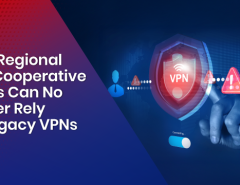As organizations continue to embrace hybrid work models and migrate applications to the cloud, traditional network security approaches like VPNs are proving inadequate. Zero-trust network Access (ZTNA) has emerged as the modern framework for secure access, operating on the principle of “never trust, always verify.” However, with numerous vendors offering different ZTNA solutions, selecting the right one requires careful consideration of organizational needs, solution types, key features, and implementation factors.
Assessing Organizational Requirements
The first step in selecting a ZTNA solution is thoroughly evaluating your organization’s specific needs. Consider the nature of your workforce: do employees work remotely, in-office, or in a hybrid arrangement? The solution must accommodate secure access from various locations while ensuring productivity. Additionally, assess whether third-party vendors or contractors require controlled access to specific resources, as this will influence whether an agent-based or agentless approach is more suitable.
Another critical factor is the sensitivity of the data and applications being accessed. Organizations handling financial, healthcare, or other regulated data must ensure the ZTNA solution complies with industry standards such as GDPR, HIPAA, or SOC 2. Furthermore, examine how the solution integrates with your existing security infrastructure, including identity and access management (IAM) systems, endpoint detection and response (EDR) tools, and security information and event management (SIEM) platforms. A seamless integration ensures cohesive security policies and reduces operational complexity.
Understanding ZTNA Deployment Models
ZTNA solutions generally fall into two primary categories: service-initiated (agent-based) and network-initiated (agentless). Service-initiated ZTNA requires installing a lightweight agent on user devices, which then connects to a cloud-based broker that enforces access policies. This model is ideal for organizations with managed corporate devices, as it provides granular control over endpoint security.
On the other hand, network-initiated ZTNA does not require software installation. Instead, users access resources through a web portal or browser, enforcing policies via DNS or routing controls. This approach is better suited for third-party users or unmanaged devices, offering flexibility without compromising security. Some vendors provide hybrid models that combine both approaches, allowing organizations to tailor access based on user roles and device types.
Essential Features of a Robust ZTNA Solution
When evaluating ZTNA providers, prioritize solutions that offer strong identity-centric security. Multi-factor authentication (MFA) and continuous authentication mechanisms, such as behavioral analytics, ensure that only verified users gain access. Role-based access control (RBAC) further enhances security by enforcing the principle of least privilege, granting users access only to the resources they need.
Granular access controls are another critical feature. Look for solutions that provide application-level segmentation rather than just network-level controls. Context-aware policies, which consider device posture, geographic location, and time of access, add a layer of security.
Moreover, A robust ZTNA solution should include several other essential features to ensure security and flexibility. It must support user device binding to associate users with their specific devices securely. Additionally, it should support local users in accommodating on-premises authentication needs. Compatibility with legacy identity providers (IdPs) is crucial for seamless integration with existing systems. Furthermore, the solution should enable session recording over various protocols to enhance monitoring and compliance.
Integration capabilities should not be overlooked. The ideal ZTNA solution should seamlessly connect with existing security tools, such as SIEM and SOAR platforms, for centralized monitoring and incident response. Additionally, API-based automation can streamline policy management, reducing administrative overhead. Finally, user experience plays a pivotal role in adoption. Features like single sign-on (SSO) and fast, reliable connectivity help maintain productivity while ensuring security.
Evaluating Deployment and Cost Considerations
Implementation complexity and cost are decisive factors in choosing a ZTNA solution. Cloud-based ZTNA, delivered as a SaaS offering, typically involves minimal deployment effort and is ideal for organizations with predominantly cloud-based applications. While offering greater control, on-premises deployments require more extensive setup and maintenance, making them better suited for highly regulated industries with strict data residency requirements. Hybrid models strike a balance, catering to organizations with mixed infrastructure.
Cost structures vary among providers, with some offering per-user licensing and others charging based on application access. Be mindful of potential hidden costs, such as bandwidth usage or fees for additional security integrations. Conducting a proof-of-concept (POC) trial can provide valuable insights into the solution’s real-world performance and help justify investment by demonstrating potential cost savings, such as reduced VPN expenses or improved security efficiency.
Conclusion: Making an Informed Decision
Choosing the right ZTNA solution demands a structured approach. Begin by assessing your organization’s unique requirements, including workforce dynamics, data sensitivity, and existing security infrastructure. Next, understand the different deployment models to determine whether an agent-based, agentless, or hybrid solution aligns with your needs. Prioritize features that enhance security without compromising usability and carefully evaluate deployment efforts and costs to ensure smooth implementation.
By following this comprehensive guide, organizations can adopt a ZTNA solution that strengthens security and supports operational efficiency and scalability. As the threat landscape evolves, a well-chosen ZTNA framework will provide flexibility and resilience to safeguard critical assets in an increasingly perimeter-less world.
Discover how Seqrite ZTNA can transform your organization’s security with a robust, cloud-native zero-trust solution tailored for modern enterprises. Contact us today or request a demo to start your journey toward a more secure and efficient network!




